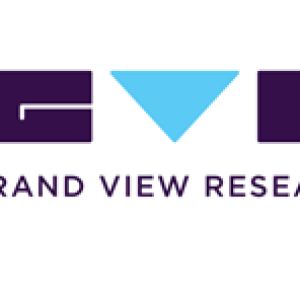Get To Know More Myths & Facts About Fashion Influencer Marketing MarketPosted by Mrudula Anil Karmarkar on April 20th, 2022 The global fashion influencer marketing market size is anticipated to reach USD 17.12 billion by 2027, according to a new report by Grand View Research, Inc. It is anticipated to exhibit a CAGR of 35.7% over the forecast period. The growing popularity of social media applications such as TikTok and Instagram Reels is one of the key factors driving market growth. These applications allow users to make shorter and more immersive videos. Short video applications help fashion influencers add special effects to their videos, thus aiding in content creation and guaranteeing higher consumer engagement. In October 2020, TikTok also launched its analytics tool for Pro accounts to offer more detailed insights regarding the performance of the content and audience interaction, allowing fashion influencers to post content that is in sync with their followers’ demands. The rising popularity of influencer incubators offers promising growth opportunities to the industry due to the ability to capture higher engagement rates. Influencer incubators search for key opinion leaders and influencers with high engagement rates and nurture them to produce content coinciding with the brand value of a company. These influencers become a part of the brand, thus helping marketers advertise their products to a familiar and loyal audience. Companies, including Tmall.com, have started leveraging influencer incubator solutions to boost sales for product categories such as cosmetics and apparel, offering market growth prospects. The integration of e-commerce with social media is also expected to work well for the growth of the market. This can be attributed to digital payment features on social media platforms and their transition to ‘retailtainment’ sites. Live-streaming platforms such as Taobao Live and Little Red Book in China have started utilizing social-media, live-streaming, and video capabilities to encourage users to interact, comment, and engage more effectively. Such developments are also expected to enable fashion influencers to effectively advertise their products and brands to foster meaningful relations with their followers. Developers have also started leveraging Artificial Intelligence (AI) to program virtual influencers, which portray similar content on their feed as fashion influencers. Virtual fashion influencers such as Lil Miquela, Zhi, Margot, and Shudu enable brands and marketers to indulge in more affordable influencer marketing practices and generate more specific, data-driven content. AI helps creators interpret consumer data at various levels and offer specialized content that resonates with audiences the most, thus driving higher engagements. Deploying AI-based content creators also allows brands to enhance creativity and fully-control their marketing campaigns, thus promising higher adoption of virtual fashion influencers. To Request Sample Copy of this report, click the link: https://www.grandviewresearch.com/industry-analysis/fashion-influencer-marketing-market/request/rs1 Fashion Influencer Marketing Market Report Highlights
Social Search Engine (SSE) and Social Search Optimization (SSO) also offer promising growth opportunities to the industry. High use of social media platforms such as Facebook, Twitter, and Instagram in countries such as the U.S., the U.K., India, and platforms such as WeChat and Red Book App in China have acted as catalysts building the presence of several brands on digital media. SSE and SSO help optimize content on social media platforms by filtering content such as page descriptions, articles, and photos, which improves organic search results and offers precise buying options to users. The use of SSE and SSO is essential in the fashion influencer marketing market as fashion influencers mention the brands’ and companies’ products being showcased, promoting the use of advertised products, thus offering better insights and search results to consumers. The rising user base of social media websites such as YouTube and Facebook has been instrumental in driving the growth of the market. In September 2020, YouTube launched the ‘/Fashion,’ a unique hub for beauty and fashion content. Fashion brands are also trying to engage with more versatile influencers to offer them insights in art direction and filmmaking. This has helped in building more genuine connections with their consumers. Some of the prominent players in the global fashion influencer marketing market are:
Like it? Share it!More by this author |


